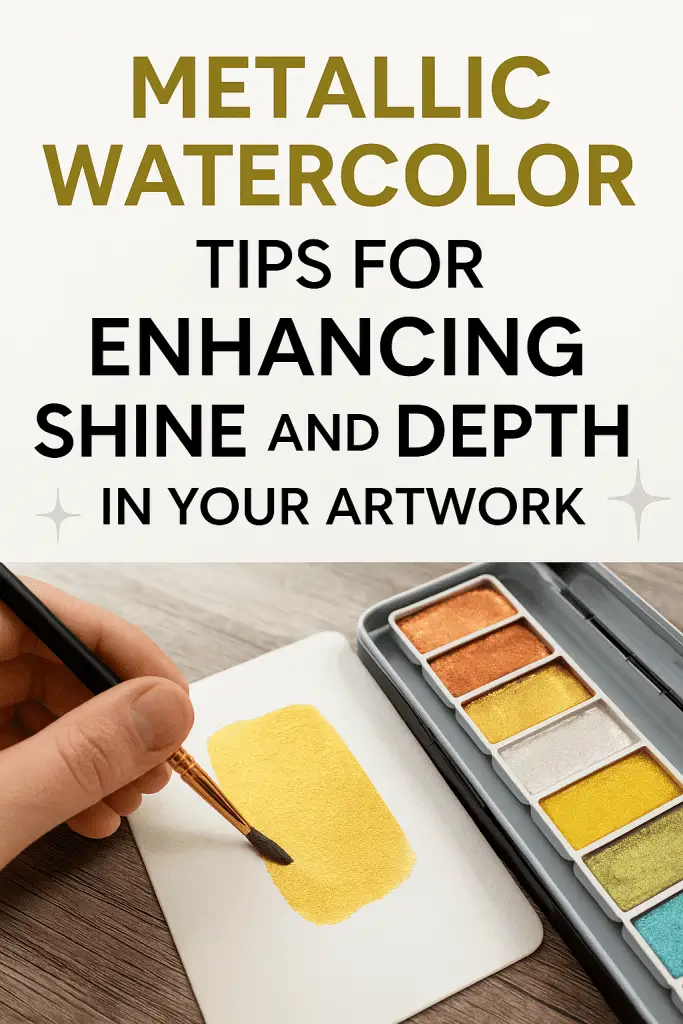
Metallic watercolors add a unique shine and depth to paintings that regular watercolors cannot achieve. To get the best results, artists should use high-quality metallic paints and apply thin layers to build up shimmer without losing transparency. Using a damp brush rather than a soaking wet one helps control the metallic effect and keeps the paint from looking clumpy or dull.
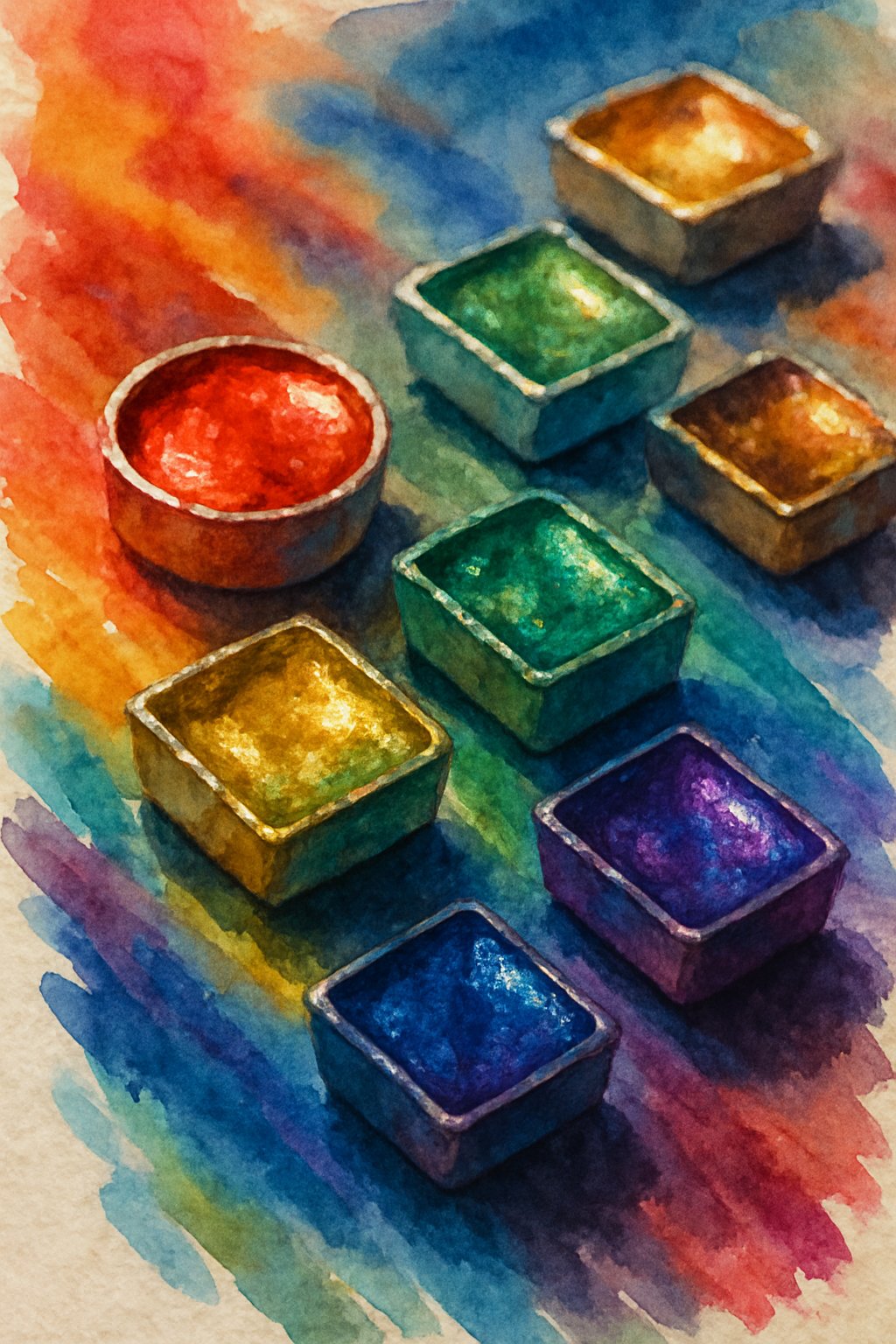
Choosing the right paper can also make a difference. Smooth, heavyweight paper allows metallic paints to sit on the surface and reflect light better. It can help create clearer shine and more vibrant effects.
Experimenting with layering metallic colors over regular watercolor can add interesting texture and spark. Mixing metallics with other mediums or using them for fine details are also effective ways to enhance artwork. For more tips on working with these paints, explore this guide to metallic watercolors.
Understanding Metallic Watercolor
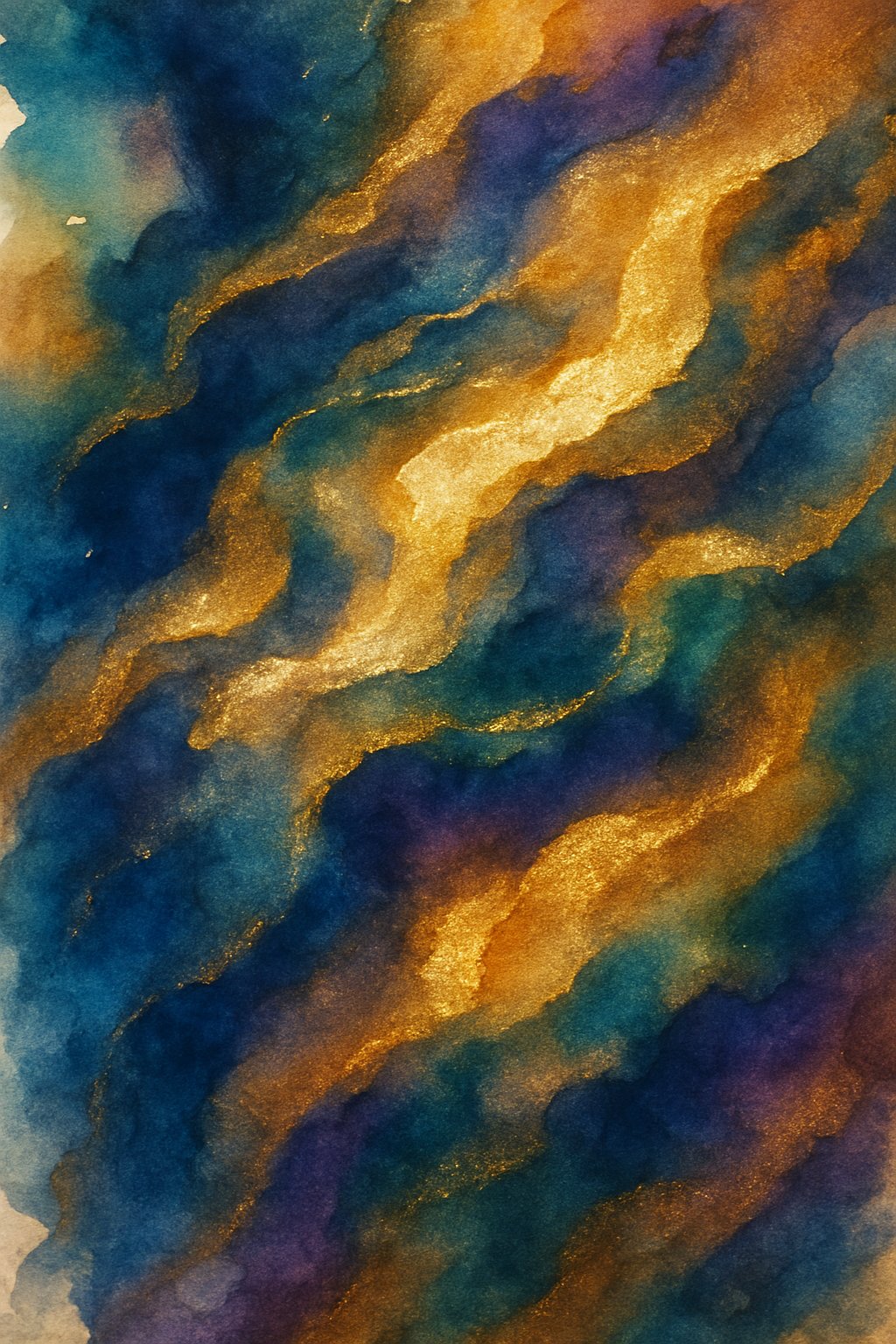
Metallic watercolor paints add a shiny, reflective quality to artwork. They contain special pigments that catch and reflect light, giving paintings a unique look. These paints behave differently from regular watercolors, so it helps to know their key features and how they benefit an artist.
What Are Metallic Watercolors
Metallic watercolors are paint made with fine metallic particles mixed into traditional watercolor formulas. These particles create a shimmer or sparkle when the paint dries.
They come in various shades like gold, silver, bronze, and even colored metallics such as blue or green. Artists use them to highlight areas, add texture, or create effects that glow under light.
Metallic watercolors are usually transparent or semi-transparent. When layered over other colors, they add a glow without covering the base entirely. This makes them great for mixing or painting on top of dry washes.
Key Properties of Metallic Watercolor Paints
Metallic watercolors have a few distinct traits. First, they reflect light due to metal flakes or mica pigments inside. This causes a shiny, sometimes glittery finish.
Second, their texture is slightly different. They can feel thicker and sometimes separate in pans or tubes, so stirring before use is important.
Third, metallic paints usually dry more slowly and can be less vibrant compared to standard watercolors. It’s best to use heavier paper that can handle layering and shinier pigments.
Here’s a quick look at key properties:
| Property | Description |
|---|---|
| Transparency | Mostly transparent or semi-transparent |
| Reflective Quality | Contains metal flakes, gives shine |
| Drying Time | Often slower than standard watercolors |
| Texture | Slightly thicker, may settle in pans |
Advantages of Using Metallic Watercolors
Using metallic watercolors can add depth and interest to paintings. The shimmer highlights details and creates focus points in the artwork.
They are versatile. Artists can use them for fine lines, washes, or special effects like stars in the sky or decorative accents.
Metallic watercolors also work well in mixed media. They pair nicely with other materials like ink or gouache to increase contrast.
Finally, these paints help make simple designs look more polished and professional without extra tools or materials. Their unique shine can transform everyday subjects into something eye-catching.
More detailed tips for using metallic watercolors can be found in guides like this Metallic Watercolor: Beginners Guide.
Essential Tools and Materials
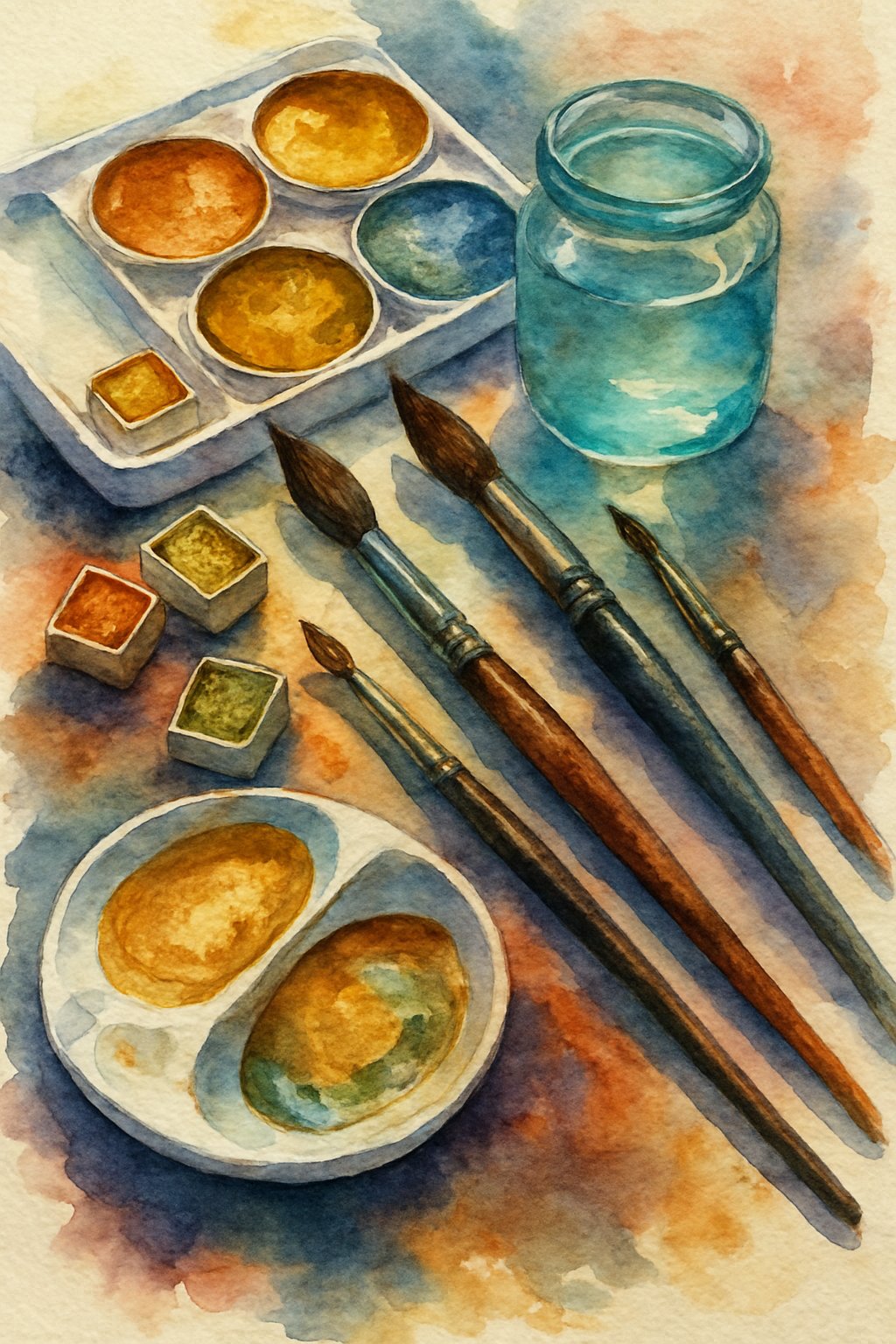
Using the right materials is key for good results in metallic watercolor painting. Important choices include the paint quality, brushes, and paper type. These tools impact how well the metallic paint shines and blends on the surface.
Selecting Quality Metallic Watercolors
Choosing metals watercolor paints with strong pigmentation ensures a bright, reflective finish. Higher-quality sets offer better shimmer because of finely ground metallic pigments. These pigments catch light more evenly and avoid patchy color.
Look for palettes that feature various metallic tones like gold, silver, copper, and pearl. This variety lets the artist create depth and contrast. Tubed paints often provide thicker, more vibrant pigment than pans.
Check if the paint is designed for watercolor application, which affects how it moves with water. Avoid paints labeled as acrylic or gouache if the goal is the classic translucent shimmer.
Choosing Appropriate Brushes and Paper
Brushes with fine, synthetic bristles work best for metallic watercolors. They hold enough water and pigment without shedding. Round brushes in smaller sizes help create precise details that show off the metallic effects.
Choosing the right paper is crucial. Heavyweight, smooth watercolor paper prevents buckling and allows metallic pigments to sit evenly on the surface. Papers labeled as “hot-pressed” have a smooth finish that helps metallic paint adhere better.
Using high-quality paper designed for metallic watercolor improves shine and blending. It avoids the dull look that rough paper can cause when the pigments do not spread uniformly. For detail work, smooth paper and fine brushes enhance the metallic look.
For more tips on selecting supplies, check these essential techniques and applications.
Preparation and Palette Setup
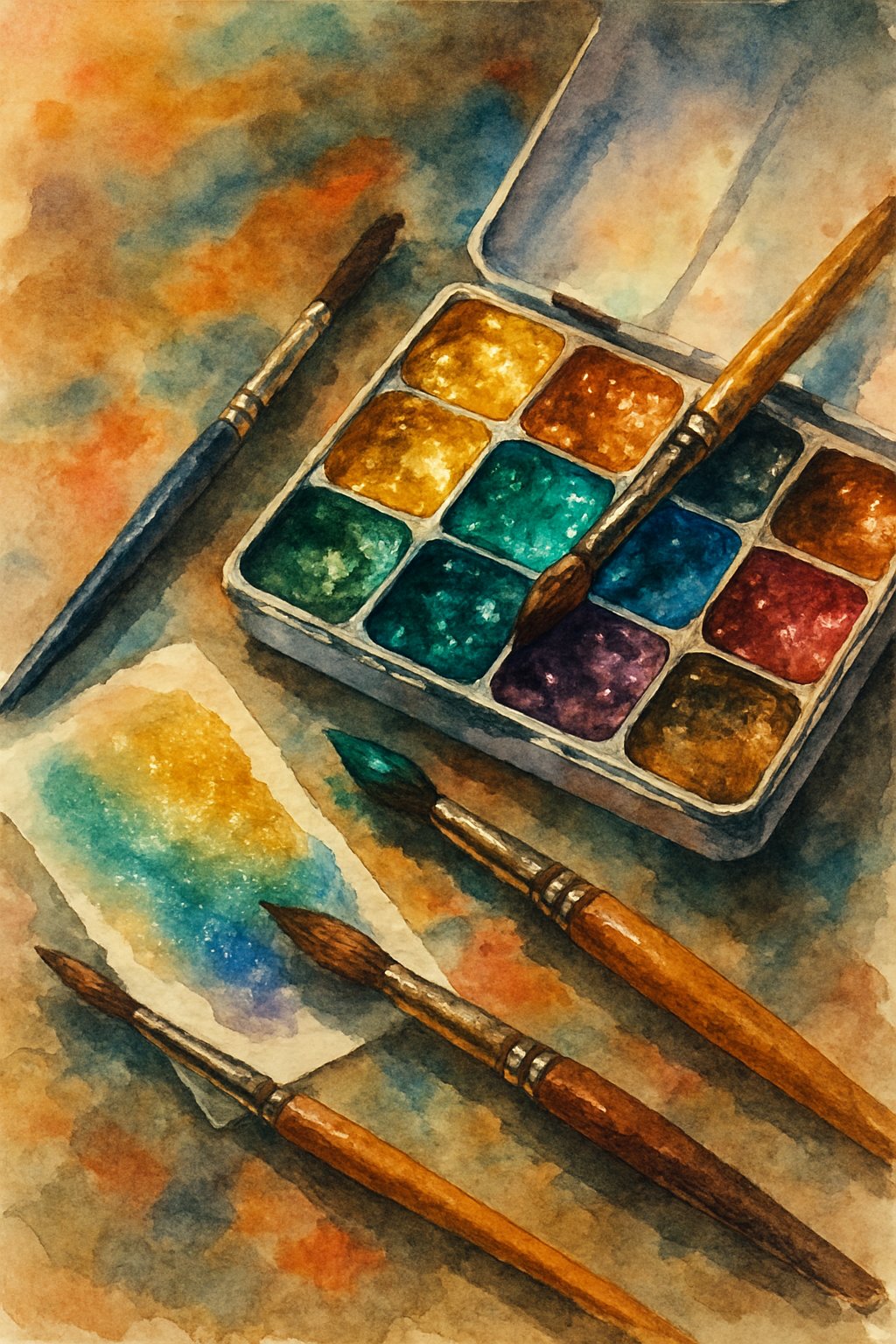
Setting up metallic watercolor paints requires careful preparation to preserve their shimmer and ensure smooth application. Proper mixing and palette arrangement help maintain the paint’s reflective quality and control the paint’s consistency.
Preparing Metallic Watercolor Paints
Metallic watercolors often come in pans or tubes and need a light touch to activate their shimmer. It is best to moisten the paint with a damp brush and let it sit for about 30 seconds before using. This softens the paint without washing away the metallic particles.
Avoid adding too much water. Excess water can dilute the metallic pigments and reduce the shine. Using a palette with small wells helps control the amount of water mixed in.
He or she should also clean brushes well between colors to keep metallic paints pure and avoid muddy results. Using synthetic brushes can sometimes work better because they do not absorb as much water or paint as natural brushes do.
Mixing Colors for Optimal Sheen
When mixing metallic watercolors, it is important to use minimal blending to keep the metallic effect visible. Overmixing metallic paints with non-metallic colors can dull the shimmer.
To maintain shine, mixing metallic paint with lighter or similar hues works better than dark colors. For example, combining gold metallic with yellows or pale orange keeps the metallic glint noticeable.
Another tip is to mix colors directly on the paper rather than on the palette. This layering technique preserves the metallic particles on top, maximizing their shine.
Using a clean brush or sponge to gently lift and spread the paint can help keep the metallic texture consistent throughout the artwork.
For more detailed guidance on setup, see this watercolor palette setup guide.
Metallic Watercolor Techniques
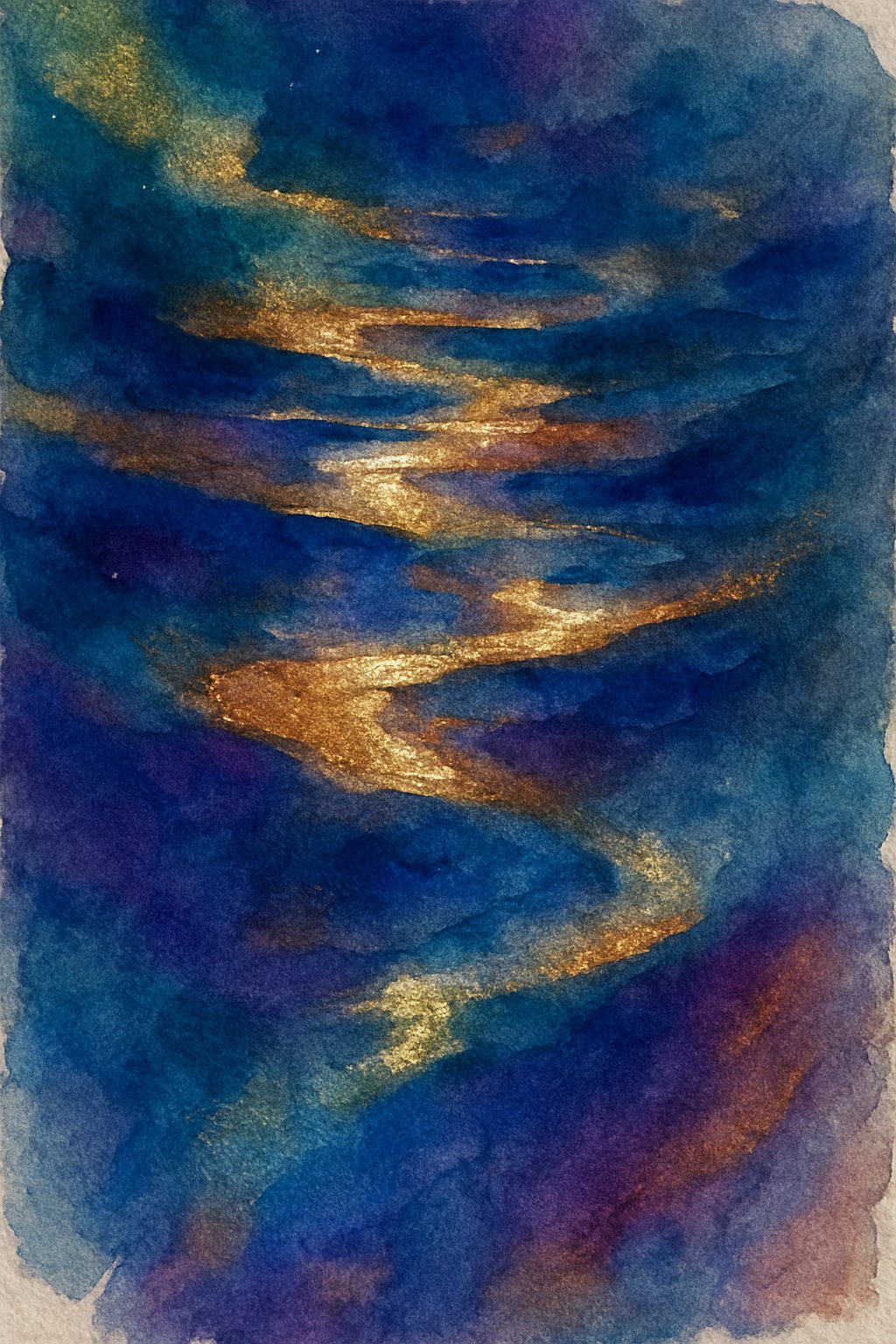
Metallic watercolors require careful handling to show their shimmer best. Artists need to control how layers build up and use them to brighten specific areas. These actions bring out the paint’s reflective qualities without dulling them.
Layering for Depth and Shine
Layering metallic watercolor adds both shine and color depth. Start with a light wash of regular watercolor to create a base. Once dry, apply the metallic layer on top. This lets the metallic paint stand out more against the background.
Use thin layers of metallic paint. Thick coats can look heavy and hide the shimmer. Let each layer dry completely before adding more to avoid mixing and losing sparkle. Multiple thin layers build a glowing, dimensional effect.
To increase shine, layer metallics over darker colors like blues or purples. This contrast makes the shimmer pop. Artists should avoid overworking the paint, which can damage the delicate metallic pigments.
Highlighting and Accents
Metallic watercolors work well for highlights and small accents. They catch light and add interest to details like edges or small shapes.
Use a fine brush for precise strokes along edges or in focal points. This directs the viewer’s eye and adds subtle shine without overwhelming the piece.
Applying metallic paint last is best. This preserves its brightness and stops it from blending with other colors. A touch of metallic on things like leaves, water drops, or light reflections can lift the overall painting.
For sharper highlights, artists might mix a bit of white gouache with metallic watercolor. This makes the shine stand out in certain areas. This method works well for creating bright spots or reflections.
For more details on layering and accent techniques, see tips on metallic watercolor painting ideas.
Blending Techniques for Metallic Watercolors
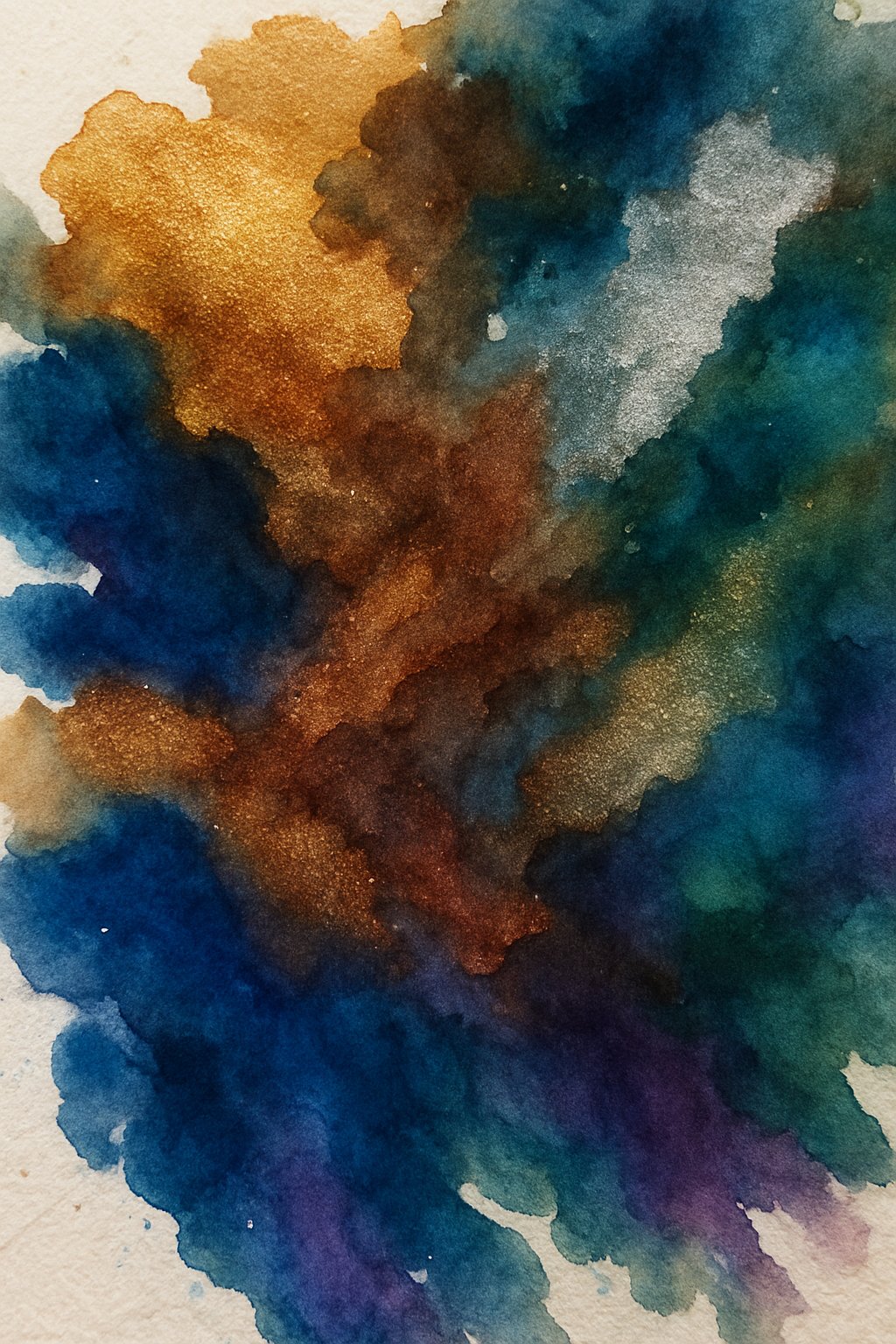
Blending metallic watercolors requires control over water and pigment to maintain the shimmer while creating smooth transitions. Artists can use specific methods to mix colors cleanly or combine metallics with traditional watercolors for varied effects.
Achieving Smooth Blends
To blend metallic watercolors smoothly, an artist should start with a moist brush and apply the paint while the paper is still damp. This allows pigments to flow and merge without harsh lines. Using a light touch is important because too much agitation can cause uneven texture or clog the shimmer.
Layering is a useful technique. Applying a thin wash first and letting it dry before adding another layer helps build depth without disturbing the reflective particles. Keeping brushes clean and using a soft brush also improves the blending quality.
Blending with Traditional Watercolors
Metallic paints mix well with regular watercolors for subtle shimmer effects. When combining them, it is wise to apply the metallic layer over dry traditional washes to avoid muddying colors. This technique preserves both the vibrancy of the base colors and the metallic shine.
Artists can experiment by mixing small amounts of metallic watercolor into regular paint to add tone without overwhelming sparkle. This creates a gentle glow rather than full coverage. Maintaining proper dilution and using a light touch help blend the two types effectively. For detailed tips on mixing these paints, see 3 blending effects using metallic watercolors.
Creative Ideas and Applications
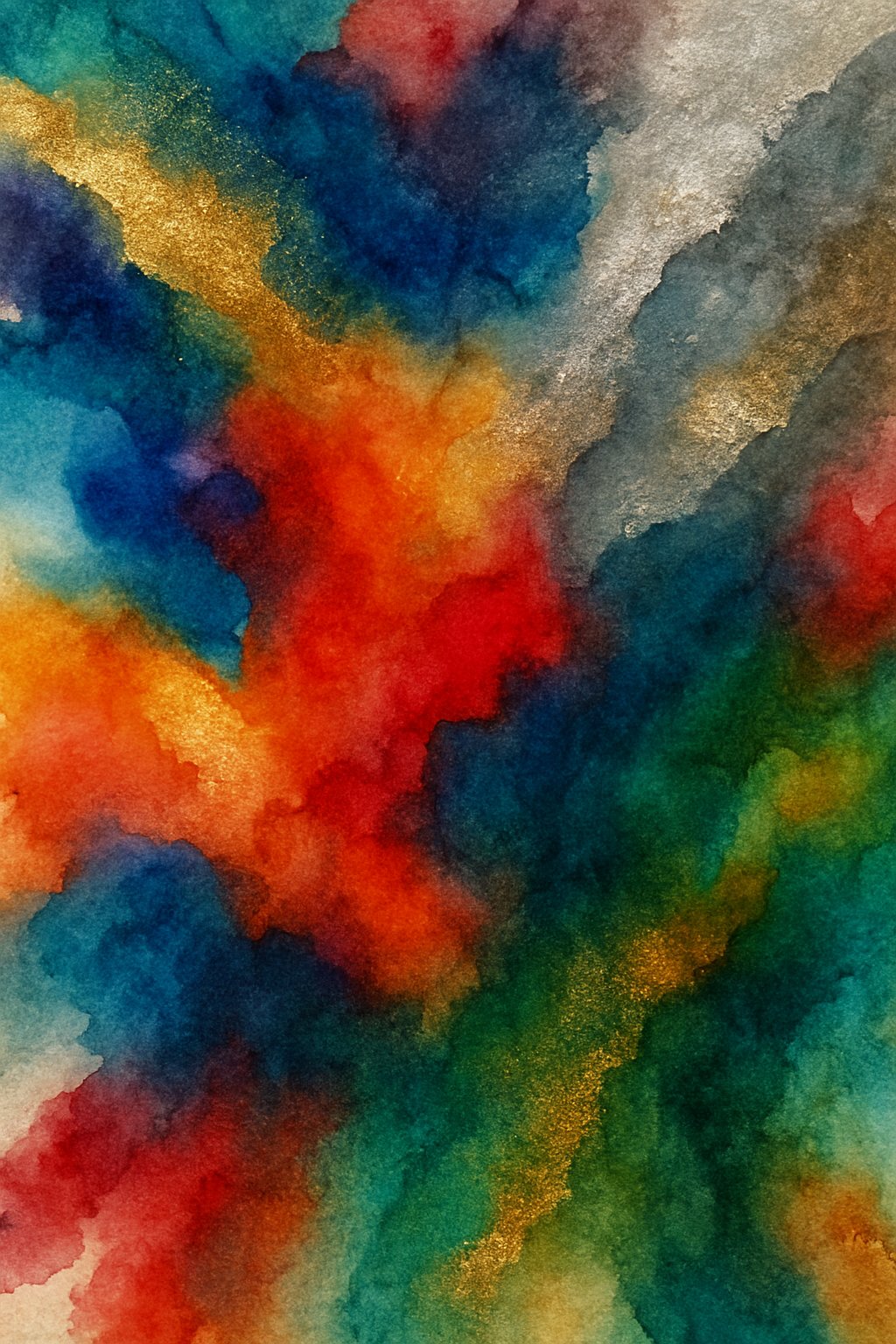
Metallic watercolor adds a unique shine that can transform artwork with subtle or bold effects. It works well in both detailed illustrations and decorative lettering, bringing out highlights and enhancing textures.
Incorporating Metallics in Illustrations
Artists can use metallic watercolor to emphasize key parts of an illustration, such as jewelry, armor, or natural elements like leaves and water. Applying thin layers allows light to reflect realistically, adding depth without overpowering the piece.
For best results, a soft brush with controlled water helps maintain detail while spreading shimmer evenly. Metallic pigments also work well for creating special effects like glowing light sources or reflective surfaces. Layering metallic paint over dry base colors enriches hues and gives a polished finish.
Areas with texture or fine lines can benefit from metallic highlights to guide the viewer’s eye. Experimenting with light and dark contrasts alongside metallics can add dimension that traditional watercolor cannot achieve.
Metallic Accents in Calligraphy
Metallic watercolor enhances calligraphy by adding a glow to lettering, making it more eye-catching. Artists often use metallic paints on headers, invitations, or decorative projects to create a luminous effect.
Using a fine brush or dip pen allows for precision in metallic strokes. Mixing metallic paint with slightly less water than usual keeps lines sharp and prevents bleeding. Metallic colors look best when applied over dry, matte backgrounds for contrast.
Highlighting key letters or flourishes with metallics can elevate the entire piece. Layering metallic text over a solid color also boosts readability and provides an elegant touch. This technique works well for mixing script and block letters, adding variety and sparkle.
For detailed tips on applying metallic watercolor in lettering, see creative advice on Metallic Watercolor Accents.
Frequently Asked Questions
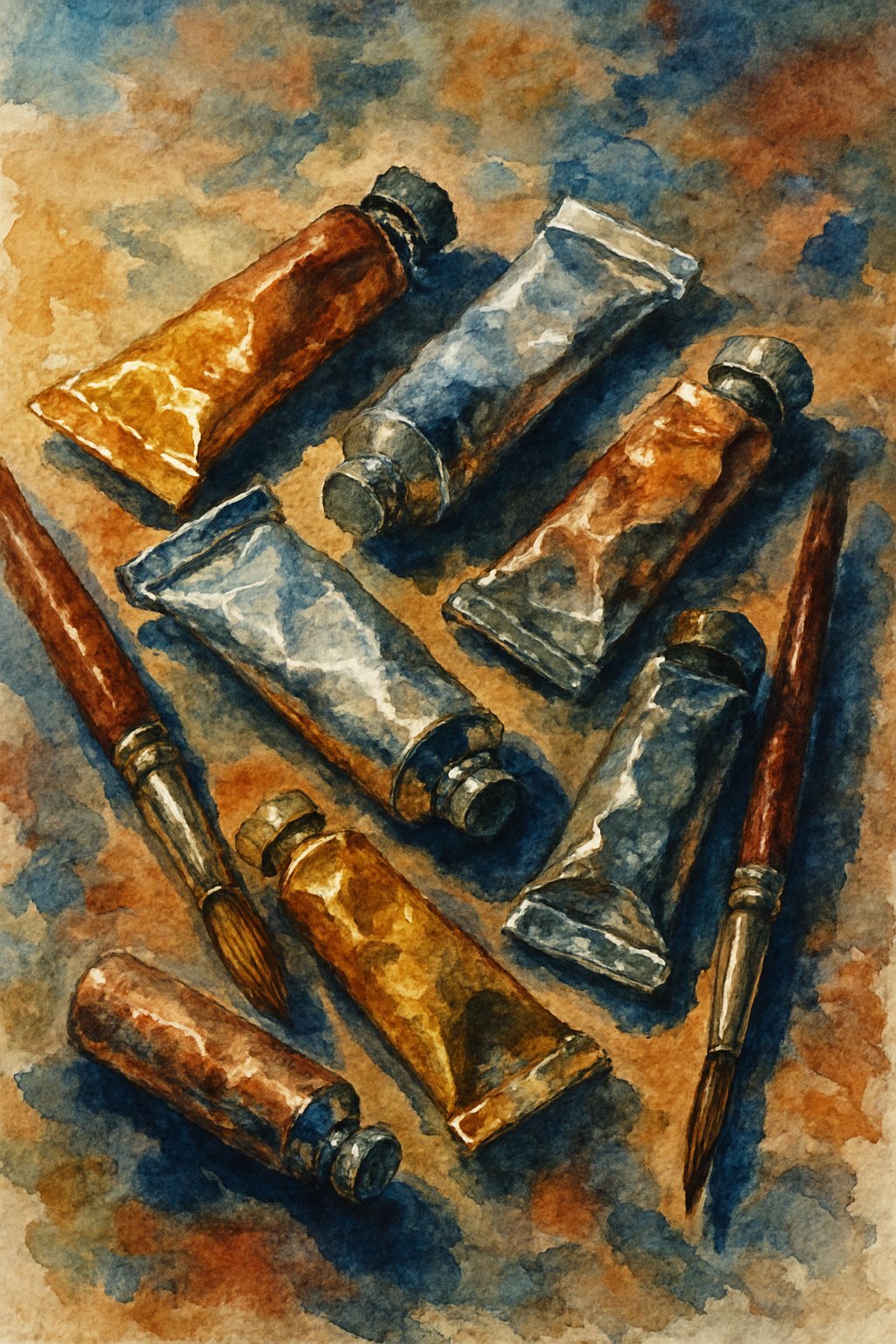
Metallic watercolors need careful handling to keep their shine and texture. Choosing the right paper, managing drying time, and mastering blending can improve the final look.
How can I prevent my metallic watercolors from clumping on the paper?
Clumping happens when too much paint or water is applied at once. Using light layers helps avoid this issue.
It also helps to stir the paint gently before use to keep the metallic particles evenly spread.
What is the best paper type to use when painting with metallic watercolors?
Black watercolor paper or dark-toned paper works best for metallic watercolors. It shows off the metallic shine more vividly than white paper
Heavier papers with a good texture allow the paint to settle without buckling or losing shine.
Can you provide techniques for layering and blending with metallic watercolors?
Layering metallic watercolors lightly prevents dulling the metallic effect. Each layer should dry before adding the next.
Blending is best done on wet paper with minimal water to avoid washing away the shine. Mixing with non-metallic colors can create subtle tones but may reduce brightness.
What should I know about the drying times of metallic watercolors compared to regular watercolors?
Metallic watercolors tend to dry slightly faster because of their particles. Watching the drying process is important to avoid unwanted streaks.
Applying paint in thin layers also helps manage drying times efficiently without losing metallic effects.
How do I maintain the luminosity of metallic watercolors in my artwork?
Avoid mixing metallic paints with too much water or other paints, as this can reduce their shine.
Allow each layer to dry fully before adding highlights. Using black or dark backgrounds enhances the paint’s luminosity.
Are there specific brushes that work better with metallic watercolor paints?
Soft, fine-tipped brushes allow for better control when painting metallic watercolors. They help spread the paint evenly without disturbing metallic flakes.
Synthetic brushes are often preferred because natural hair can absorb too much paint, dulling the effect.
For more details on paper types and usage tips, see metallic paint recommendations.